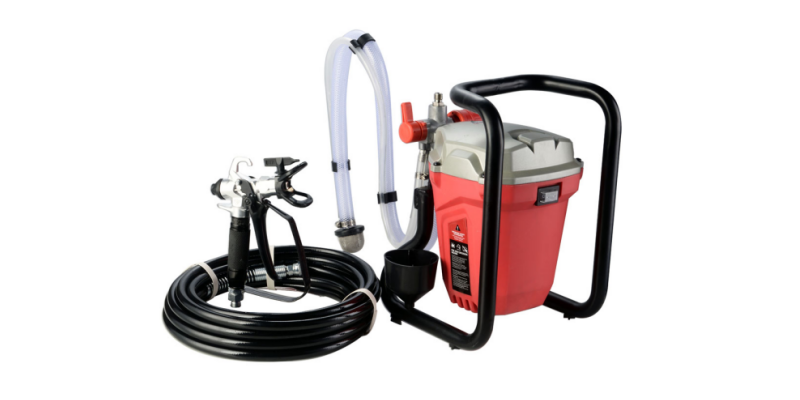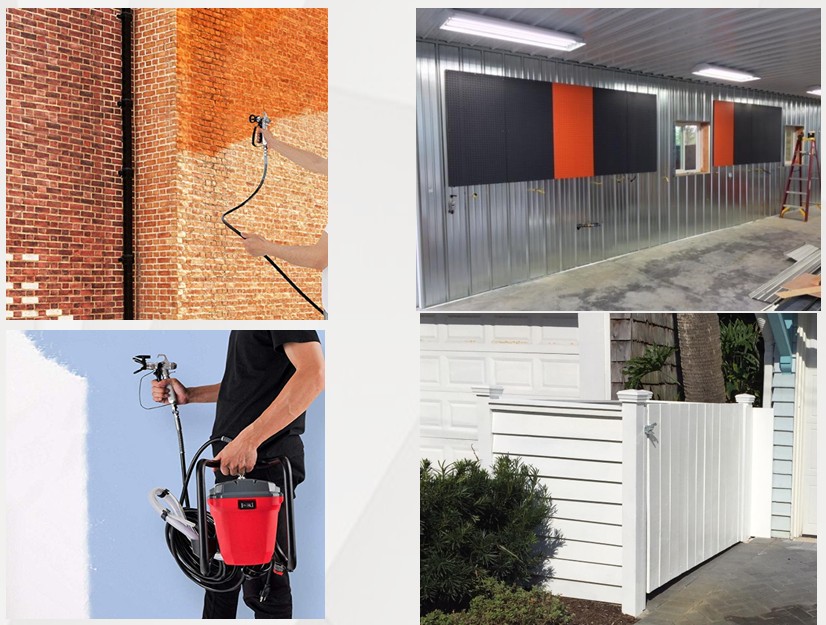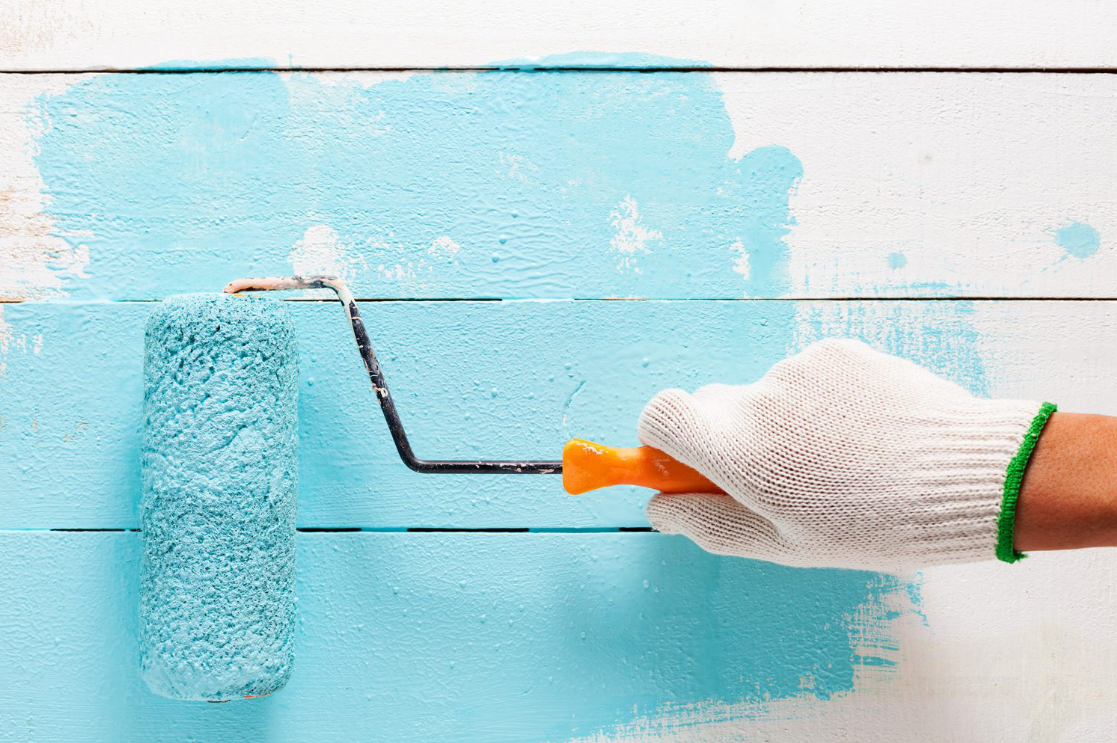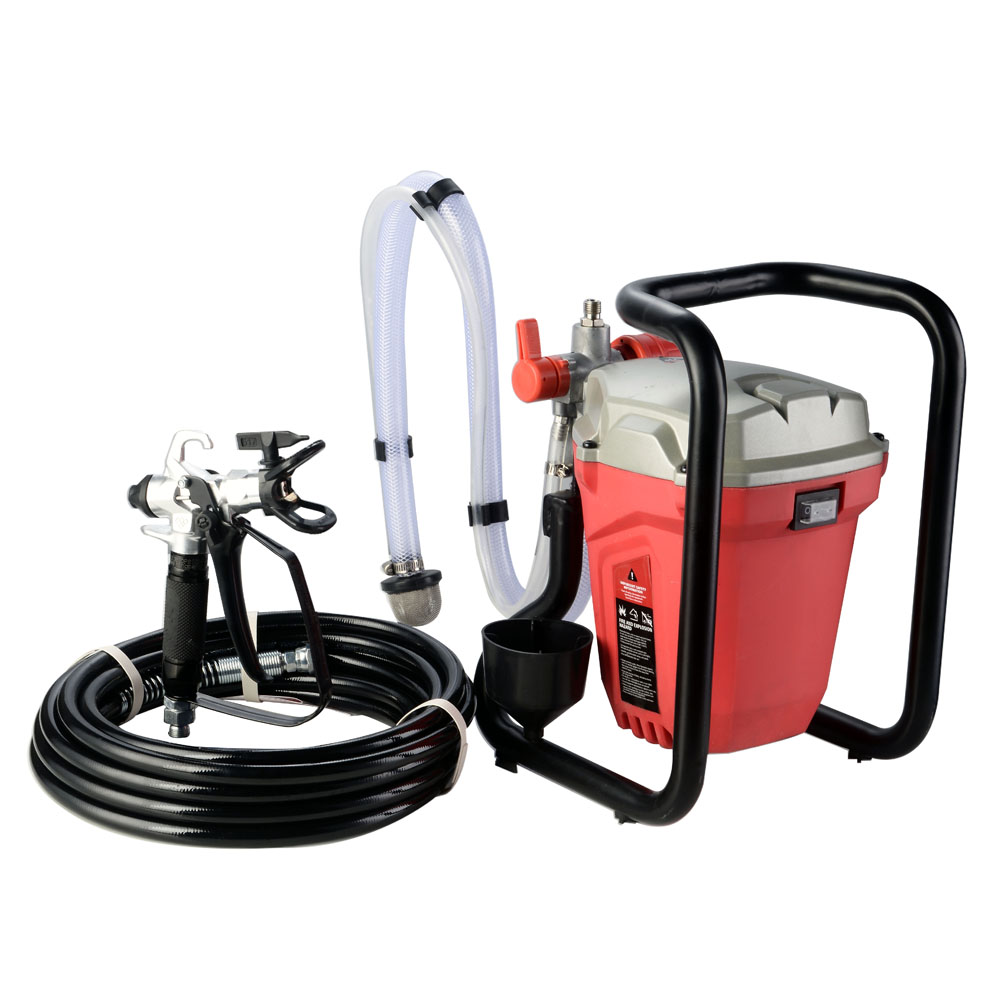
When it comes to painting walls and other surfaces, there are two main application methods - spraying the paint with airless sprayer or rolling it on with a roller. Both techniques have their pros and cons, so deciding which one to use for your next paint project requires looking at the key differences between spraying and rolling.
One of the biggest advantages of spraying paint is the speed at which you can apply it. Sprayers distribute paint quickly and evenly over large areas. This makes them ideal for painting large interior walls or covering expansive exterior siding and fences efficiently. The continuous spray pattern only needs back-and-forth motions to coat surfaces rapidly. In contrast, rolling paint takes more time as you need to reload the roller repeatedly and use an up-and-down painting motion to cover areas. The constant starting and stopping with a roller slows down the painting process.
For time-sensitive projects or painting tasks covering a large surface area, spraying can get the job done much faster than rolling. If you have smaller touch-ups or don’t require high speeds, a roller may be sufficient. But for painting efficiency, sprayers deliver better productivity.
In addition to speed, sprayers also provide superior coverage and uniformity. The fine mist of paint is applied under high pressure, allowing it to penetrate cracks, crevices and texture more effectively. This gives even coverage without having to go back over missed spots. The spray nozzle can be adjusted to control the paint output for different types of surfaces.
With rolling, it can be ensuring the paint coats in flat place, but except some areas like gaps and corners. The limited contact area of the roller means you may need to apply multiple coats to get the desired coverage. For large interior walls or exterior siding, sprayers excel at providing complete, seamless coverage.

The other versatility advantage of sprayers is their ability to reach difficult or elevated areas. Using an extension wand and different nozzles, sprayers can coat high interior ceilings, second floors or exterior overhangs. A roller simply can't access many hard-to-reach painting areas.
Sprayers also handle interior edges and corners better than rollers. The fine spray mist penetrates edges fully without needing brush touch-ups like a roller would. For accessibility and painting hard-to-reach areas, sprayers are the clear choice.
Finish Quality
For certain surfaces, spraying can provide a smoother finish than rolling can achieve. The pressurized paint application lays down a fine mist that dries into a smooth, professional-looking finish. This makes spraying ideal for surfaces where appearance is important, such as doors, trim, cabinetry or molding. The flawless look is hard to duplicate with a roller.
However, sprayers do have a learning curve when it comes to technique. It takes practice to get the distance and motion right. Applying too much paint or holding the nozzle too close can lead to drips and unevenness. For DIYers without much spray painting experience, rolling may yield better-looking results. But with the proper method, sprayers can deliver a seamless finish.

Cleanup
After the job is complete, spraying creates more cleanup than rolling. With sprayers, you’ll need to clean the hoses, nozzle, and tank or cup that held the paint. Rollers only require rinsing the applicator and paint tray. All the wasted overspray also takes longer to tidy. This makes cleanup quicker and simpler with roller application.
However, cleanup for sprayers isn’t extremely messy or time-consuming. Proper preparation like masking and drop cloths can minimize the post-paint work. The convenience advantages of spraying still generally outweigh the cleanup factor for most users. But if you want to avoid any extra effort after painting, a roller does mean easier cleanup.
Versatility
Sprayers offer more versatility in terms of the range of paints and surfaces they can handle. Not only do sprayers work with standard wall paints, but they can also apply primers, stains, sealers, varnishes and even thicker elastomeric coatings. Rollers work well for indoor flat wall paints but aren't suitable for thicker materials.
Sprayers can also handle almost any surface material and texture. From smooth drywall to rough brick and stucco, sprayers can coat any exterior or interior surface evenly. Rollers work fine on typical drywall but may struggle on uneven or porous surfaces. For versatility in paint types and surfaces, sprayers deliver.
Cost
For one-off jobs, a roller is the more budget-friendly option, if you’ll be painting frequently or have large interiors to cover, a sprayer pays for itself over time in productivity savings. Less time spent on the job means lower labor costs. With substantial painting work, a sprayer is worth the price for the efficiency gains.
The consideration is the cost differences between sprayers and rollers. Rollers only require the applicator and tray, which are just $10-$30 total. Quality spray systems do involve a higher upfront equipment investment. While high-end models can cost more than $500, entry-level paint sprayers start at only about $100.

AEROPRO AP8626 airless paint sprayer is a popular choice for entry level. Passed the EMC & CE certification. Single phase motor design. Piston pump.Supports up to 0.017 spray tip. Flexible siphon with metal inlet strainer and return tube. Inlet check ball release for easy priming. With the 821 airless spray gun, pattern width 254-305mm, and 7.6m high pressure air hose for easy mobility when painting large surfaces.
The 3000 psi high efficiency airless paint sprayer makes it easier to paint like a pro. The new tip technology decreases overspray by up to 55% while delivering softer spray, improving control and providing a more consistent finish. The 5/8 horsepower pump is a durable powerful sprayer that can spray unthinned coatings with a rebuildable fluid section that maximizes sprayer life.
Compact structure, light weight, high productive sprayer for DIY and Tradesman professional use. Suitable for a variety of paint products, perfect for small to medium projects, indoor and outdoor DIY projects like interior walls, ceilings, exterior siding, fences, decks, sheds,garages etc. Suitable for various coating types: water-based paints, oil-based paints, latex, enamels, lacquers, acrylic, varnishes, primers, stains, preservatives and other non-abrasive materials.
| Voltage | 220V/50Hz, 110V/60Hz |
| Motor Size | 1.0HP, 750W |
| Max pressure | 3000psi |
| Standard Nozzle Size | 517(0.017") |
| Length of High Pressure Hose | 7.6m |
| Max.Pressure for the Hose | 83Mpa |
| Flow Rate | 1.2L/Min |
| Net Weight | 7.0Kgs, 15.4Lbs |
AEROPRO has quickly risen to become an unrivaled global producer of air-powered devices including air tools, air spray gun, air nailer, airless paint sprayer, and etc.
AEROPRO seeks independent sales agent to represent and market our industry-leading pneumatic tools. We support OEM, ODM, OBM customization, small order quantity is acceptable and samples are available.
Make any cooperation possible. Any services related to the product, inquire with us now! Sales@aeroprotools.com